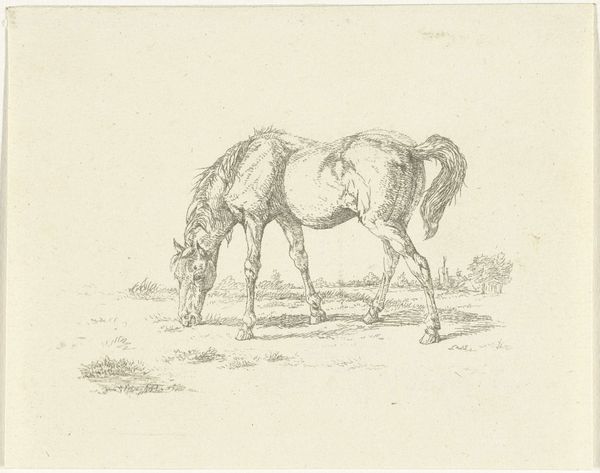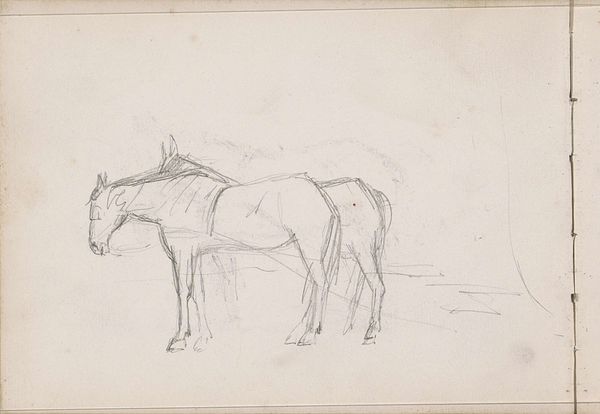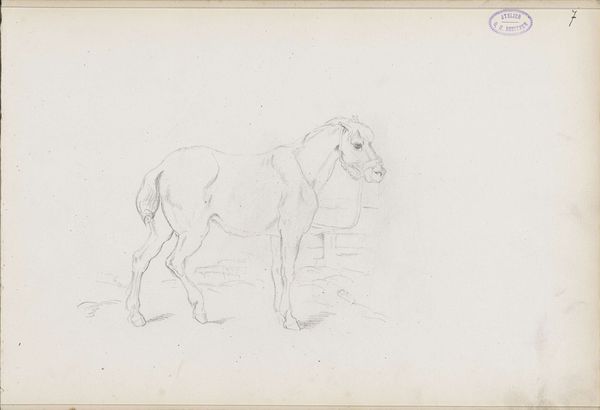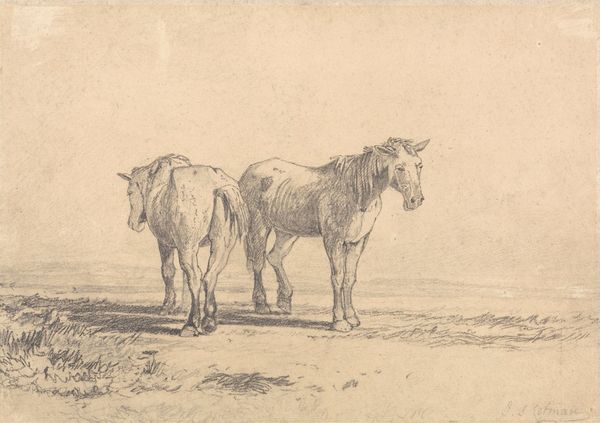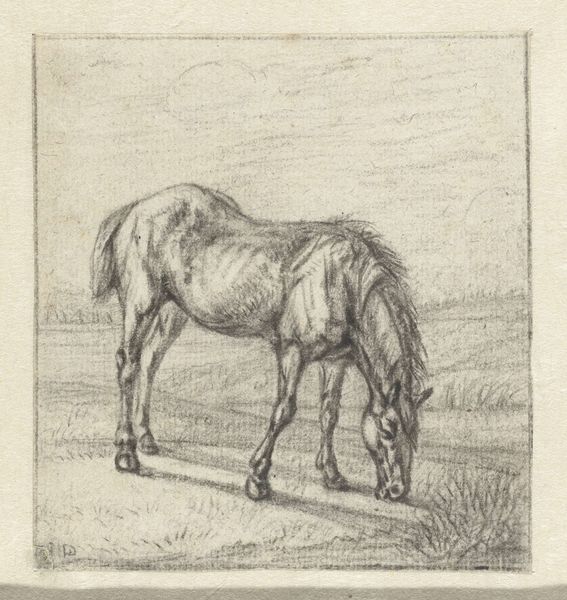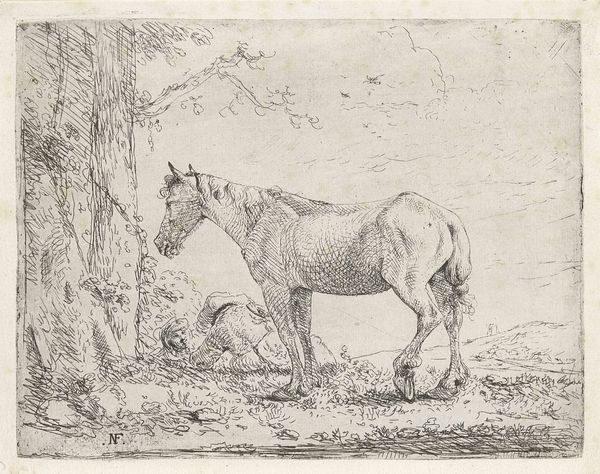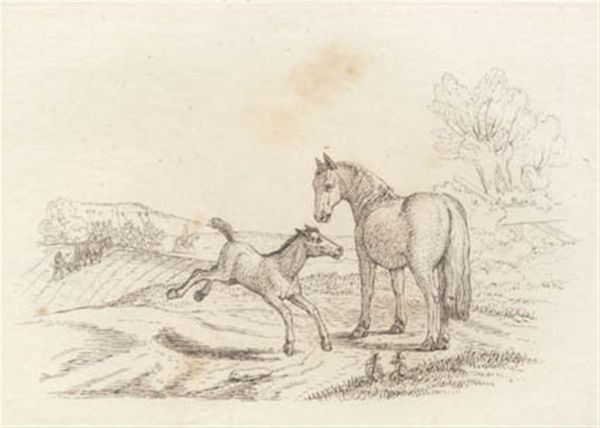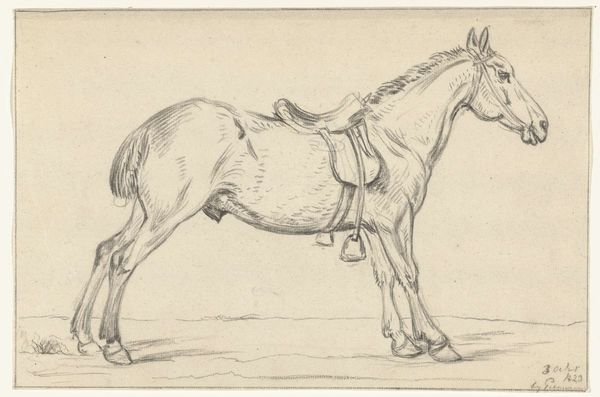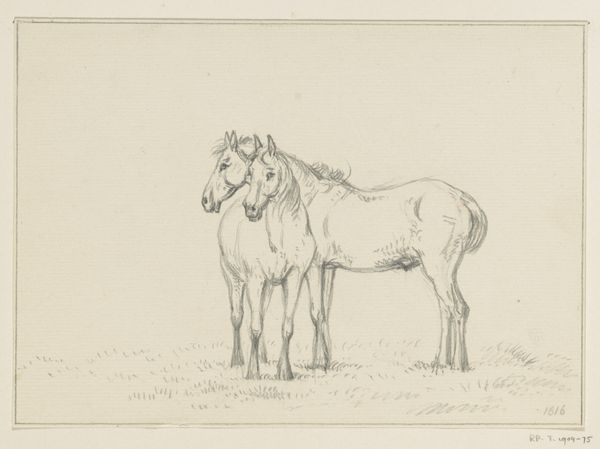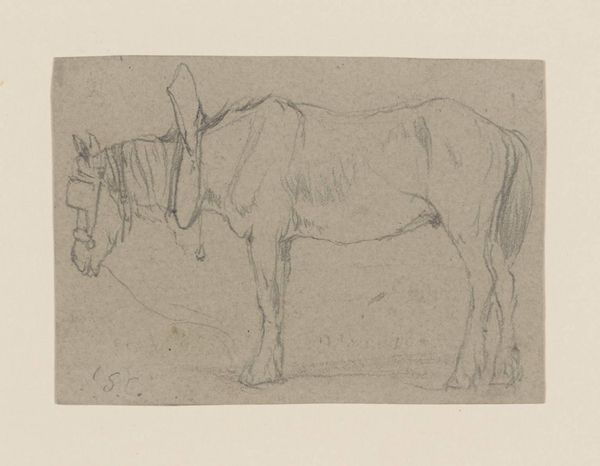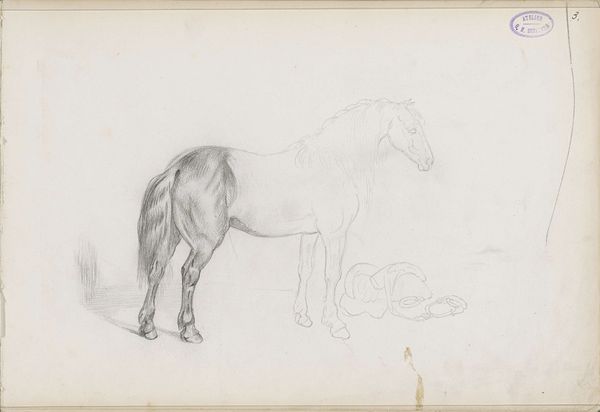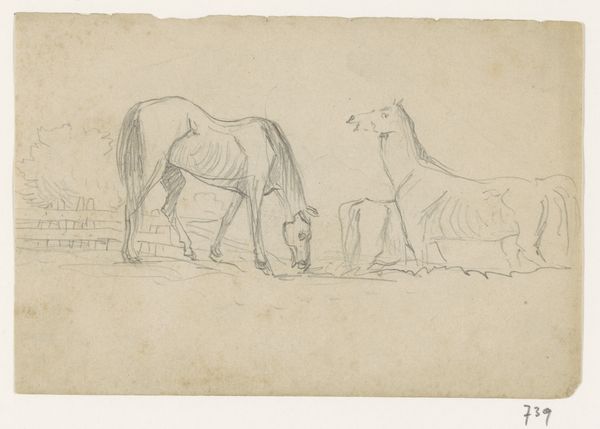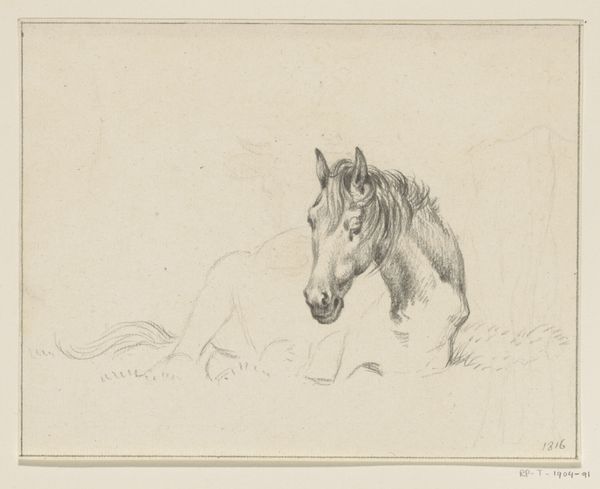
drawing, pencil
#
drawing
#
light pencil work
#
quirky sketch
#
pencil sketch
#
landscape
#
figuration
#
personal sketchbook
#
idea generation sketch
#
ink drawing experimentation
#
pen-ink sketch
#
pencil
#
horse
#
sketchbook drawing
#
genre-painting
#
fantasy sketch
#
initial sketch
Dimensions: height 135 mm, width 149 mm
Copyright: Rijks Museum: Open Domain
Curator: This light pencil work, dating from somewhere between 1811 and 1867, is titled "Drie paarden in een wei," which translates to "Three Horses in a Meadow." It's by Christiaan Wilhelmus Moorrees. Editor: It feels very intimate, like a quick glimpse into a private sketchbook. The lines are so delicate; it captures the horses’ energy with surprising economy. There’s something wild and free about it. Curator: Precisely. Moorrees was working at a time when genre painting and figuration were gaining traction, moving art away from solely depicting historical or religious scenes towards more everyday subjects. The portrayal of animals, especially horses, held symbolic weight, representing power, freedom, and the Dutch connection to rural life. Editor: That makes sense given how integral horses were to Dutch society for transportation and agriculture. Beyond that practical aspect, I’m struck by how Moorrees uses very minimal linework to define their characters. One horse is so still and watchful while the other two are just a blur of chaotic movement. Is there any significance to this contrast? Curator: That’s an insightful observation. While Moorrees wasn't necessarily aiming for overt political commentary, consider the wider socio-political context. There were societal tensions at play, a shifting social landscape perhaps mirrored by the horses, one calmly observing, others restlessly pacing. Moorrees could be indirectly capturing that societal mood, a quiet observation of contrasting energies. Editor: Perhaps the stillness speaks to resilience, and the blur of the others represents the tumult of the era? I appreciate how this drawing uses archetypal horse imagery, the kind humanity has connected with for ages, blending primal forces with something quietly contemplative. Curator: Indeed. Even a seemingly simple sketch offers layers when viewed through both historical context and symbolic reading. It provides a glimpse into 19th century Netherlands and perhaps also reflects timeless observations of animal nature itself. Editor: Looking at it this way has opened up some fascinating layers beyond the initial impression of a simple landscape sketch. It shows how potent a medium even something as basic as a pencil can be!
Comments
No comments
Be the first to comment and join the conversation on the ultimate creative platform.
